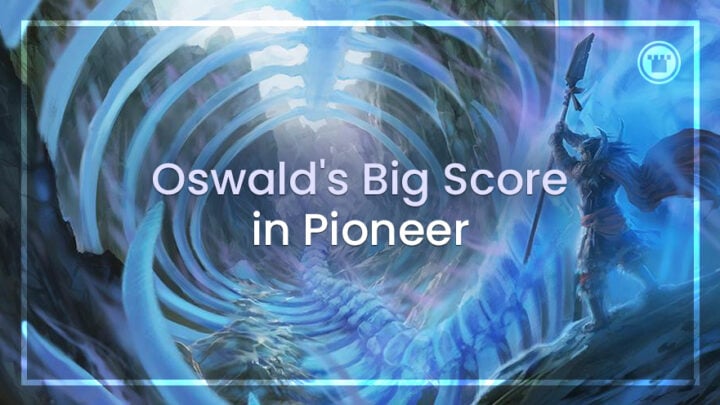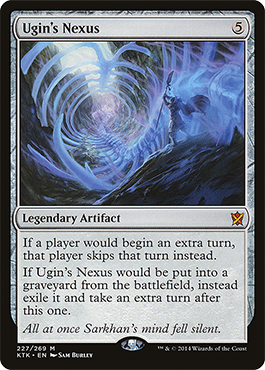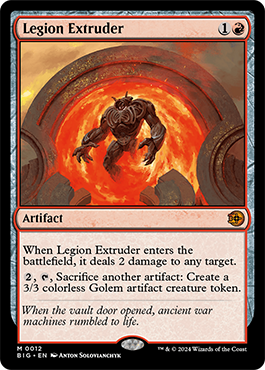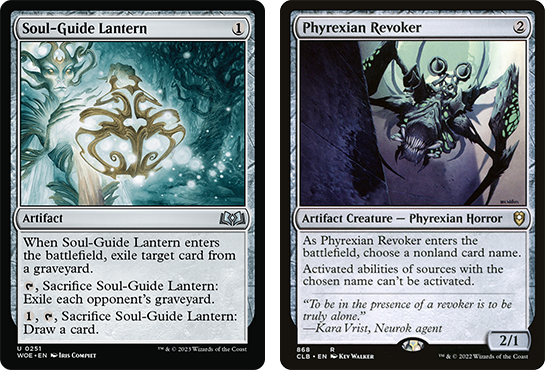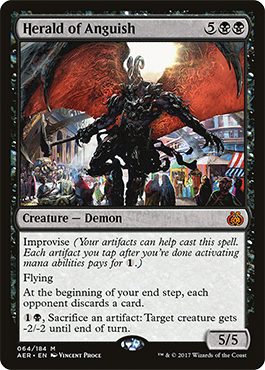I don’t get to brew many decks for tournament Magic these days. The majority of my time and energy goes into Limited (check out our Outlaws of Thunder Junction Draft guide!), so if I do play Constructed I tend to just trust decklists offered by more invested players.
But sometimes a new card (or a new set of cards) just lights up that certain section of your brain – and you know it’s time to cook. For me, that set is The Big Score: the all-mythic mini-set that helps put the “fun” into Thunder Junction.
These cards may feel like they’re from a Commander set, but they’re legal for Standard, Pioneer and Modern. With so much power injected into these formats close together, I knew I had to take a closer look.
DEUS VAULT
There’s no single mechanical theme to the cards from The Big Score, even if they are all seemingly associated with the Fomori Vault that Oko’s gang of all-star outlaws broke into. However, a majority of them do seem biased towards artifacts, and share some strong synergies as a result.
Beyond the Vault itself, I think Simulacrum Synthesizer is a great place to start. We know from Urza’s Saga in particular how powerful these “Karnstruct” tokens can be, especially when you can threaten to produce a few back to back. These ones don’t even cost mana, and the upfront investment of 2U is barely anything for a card which (with the right support) can easily take over a game. The first Simulacrum Synthesizer might only scry 2 on ETB – which still isn’t nothing. But the second one will trigger the first, and the next artifact you play after that might already be starting to overwhelm your opponent!
Most important to me is the fact the Synthesizer triggers when artifacts ETB, not on cast, which opens the vault door to all kinds of profitable interactions. Enter Esoteric Duplicator, a card with enough potential to build around in its own right, but one which also happens to work brilliantly alongside Simulacrum Synthesizer.
Not only is the Duplicator the right mana cost to trigger a Karnstruct token out of the Synthesizer, but its self-duplication ability gives us an easy way to repeatedly and efficiently pump out further tokens every turn! That interaction is already sweet, but we can make it even sweeter once we start to duplicate higher-upside artifacts like Thran Spider or Thousand Moons Smithy.
The ultimate combo is with Ugin’s Nexus: if you’re able to sacrifice it specifically during the end step, you can exile Nexus, take your extra turn unhindered, then have the Duplicator token copy appear during that end step – which you can then sacrifice immediately to keep taking turns indefinitely.
The only other piece needed for that combo is a decent sacrifice outlet for artifacts; ideally one which is an artifact itself and fits into our general gameplan of pumping out beefy creature tokens. Now, where do you think we might find a card like that?
That’s right – The Big Score strikes yet again. Legion Extruder even doubles as spot removal, ensuring we’re not totally passive while we’re getting our tempo-negative ducks in a row for the late game.
BENDING RULES
All these new Big Score artifacts look like a solid nucleus for our new deck, but there’s still plenty of slots to fill and more than a few strategic questions to address. With relatively easy mana requirements on those core cards we have a ton of directions we could take this build – but for me, there’s simply no place like gnome.
I think the consensus opinion on Oswald Fiddlebender is that the card has a ton of potential, it’s just waiting to be paired with the right shell. We’ve even seen some of that potential realised over in Legacy, where the gnome has become a core piece for Painter’s Servant/Grindstone decks.
That demonstration confirms for me that Oswald’s best role is as a supplemental piece for decks with an artifact-based wincon. His ability lets you assemble your combo quickly and with much greater consistency, while also giving you the latitude to build a lot of situational silver-bullet cards into your decklist and then react powerfully to what opponents throw at you.
Even if he can’t help us execute the Esoteric Nexus combo (since he only sacrifices at sorcery speed), Oswald means we can play fewer copies of those finishers while still assembling the combo reliably when the time is right. And when it comes to our secondary gameplan of Duplicator + Synthesizer, he is one of the best force-multipliers we could ask for.
Paying 2W to Fiddlebend a Duplicator into Thousand Moons Smithy with Synthesizer on-board is such incredible value that you might not even need the infinite turns combo for a lot of matchups!
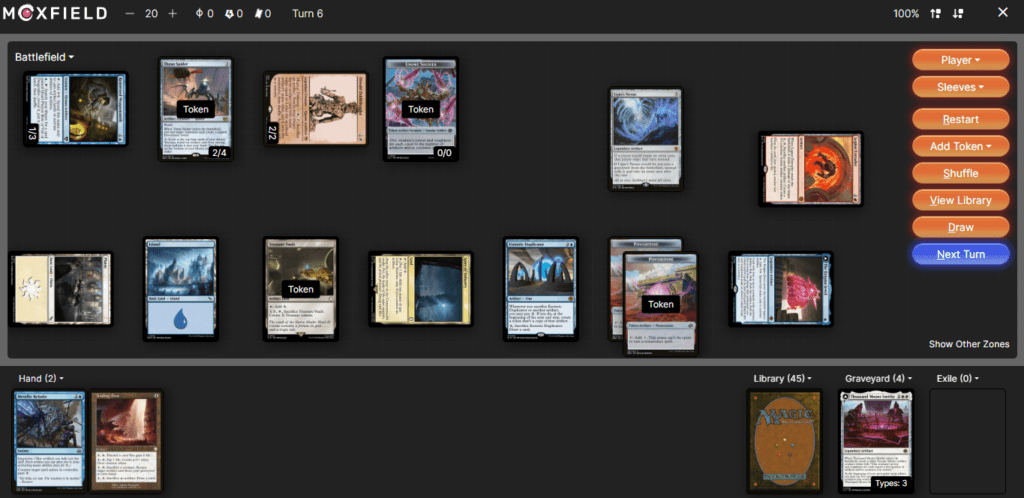
ARTIFICER COLORS AND FLAVORINGS
None of the cards we’re talking about are particularly hard to cast – but together they do represent a high average mana cost for a Constructed deck, especially when you consider we need to play a few of them to really start seeing returns. Throw in the extra costs from our activated and triggered abilities, and it’s clear that we need to add mana acceleration with at least some of our remaining slots.
Luckily, there’s a strong niche subset of cards which specifically provide mana for artifacts – I like Renowned Weaponsmith for the high return, Thran Spider for overall value, and Fabrication Foundry for adding extra combo lines.
Our color requirements do start to get a little concerning, especially when we’d like to play Treasure Vault and maybe other artifact lands to boost our synergy effects. But I hope that between Spire of Industry and some Renegade Maps snuck into our land slots we can at least produce UW with consistency. We can also run some number of Prophetic Prism effects as a way to fix colors and “launder” artifact-specific mana into a form which can pay for other spells.
All that’s left to do after that is pick out which tools we want to have in Oswald’s toolbox to handle specific situations – a smattering of artifact-based spot interaction, and then some of the nastier sideboard cards we can tutor up to slow down format boogeymen like Lotus Field.
And there you have it: a brand-new decklist with almost all new or unplayed spells in the maindeck, ready to road-test against the current Pioneer staples!
EXTENDING WARRANTIES
I’m genuinely excited about these new artifacts from The Big Score – enough to go outside my current wheelhouse and pitch this article, and even enough to invest in the paper cards at their hefty release-day prices. I do want to add a realistic disclaimer to the decklist: it’s extremely difficult for entirely new decks to break into an established Constructed metagame like Pioneer, and even moreso to design one to do it when you’ve been out of the format for the last few years.
The sideboard cards and interaction especially are the sort of decisions which should really be responsive to the decks you’re facing, and just looking up statistics on the most-played archetypes isn’t a real substitute for that. There’s even totally different packages you can run around the Synthesizer–Duplicator–Nexus combo. You could go black for better sacrifice outlets and Herald of Anguish, or a red goblin version with Gleeful Demolition, Slobad, Iron Goblin, Scrap Welder, and Krenko, Baron of Tin Street!
Even if I end up wrong about the fit with Oswald, it seems inevitable that some of these artifacts will be competitive in tournament play – if not for Pioneer, then certainly over the coming years of Standard. At worst, they might have to wait until a chunk of current power cards rotates later this year to get serious attention. But with the core cards I’ve talked about all perfectly legal through 2026, there’s plenty of time for us to fiddle it out.

Tom’s fate was sealed in 7th grade when his friend lent him a pile of commons to play Magic. He quickly picked up Boros and Orzhov decks in Ravnica block and has remained a staunch white magician ever since. A fan of all Constructed formats, he enjoys studying the history of the tournament meta. He specializes in midrange decks, especially Death & Taxes and Martyr Proc. One day, he swears he will win an MCQ with Evershrike. Ask him how at @AWanderingBard, or watch him stream Magic at twitch.tv/TheWanderingBard.

